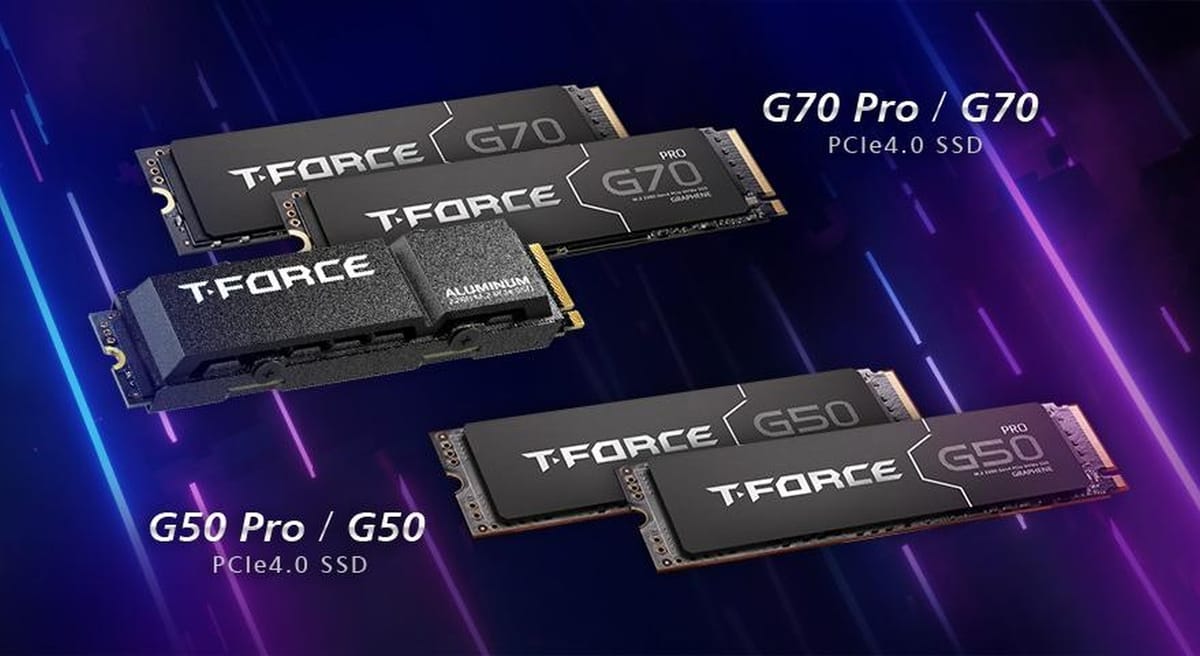
Last year we started looking at Teamgroup drives, and wow were we surprised at how aggressively they are competing in the SSD market. Their drives deliver excellent speed, consistency, and at a price that’s highly reasonable. Today we are looking at the 2TB version of the Teamgroup T-Force G70 Pro. It represents the next step for their premium PCIe Gen4-based offerings, but with a bit of new technology under the hood. Could the controller change offer better performance over their DRAM-less T-Force A440 Pro from last year? Let’s load it in our test machine and find out!
If you’ve not heard of Teamgroup, that’s not uncommon – they aren’t one of the bigger names you see spending millions of dollars on a constant barrage of advertising. That said, I’m sure they drive those big names insane as they continue to deliver a tremendous amount of value at a price the big boys simply can’t match. Our review of the Cardea T-Force A440 Pro certainly showed that, as that drive was able to push past some of the best drives on the market, and at a price point that was easily 25% less than their competitors. Teamgroup has been working as a manufacturer since 1997, achieving full vertical integration. This means they are responsible for their own product design, materials, manufacturing, and quality control. They partner with the best in the business for controllers, just like everyone else, but they are able to ensure that the products they release are of the highest quality. Let’s get under the hood and see why.
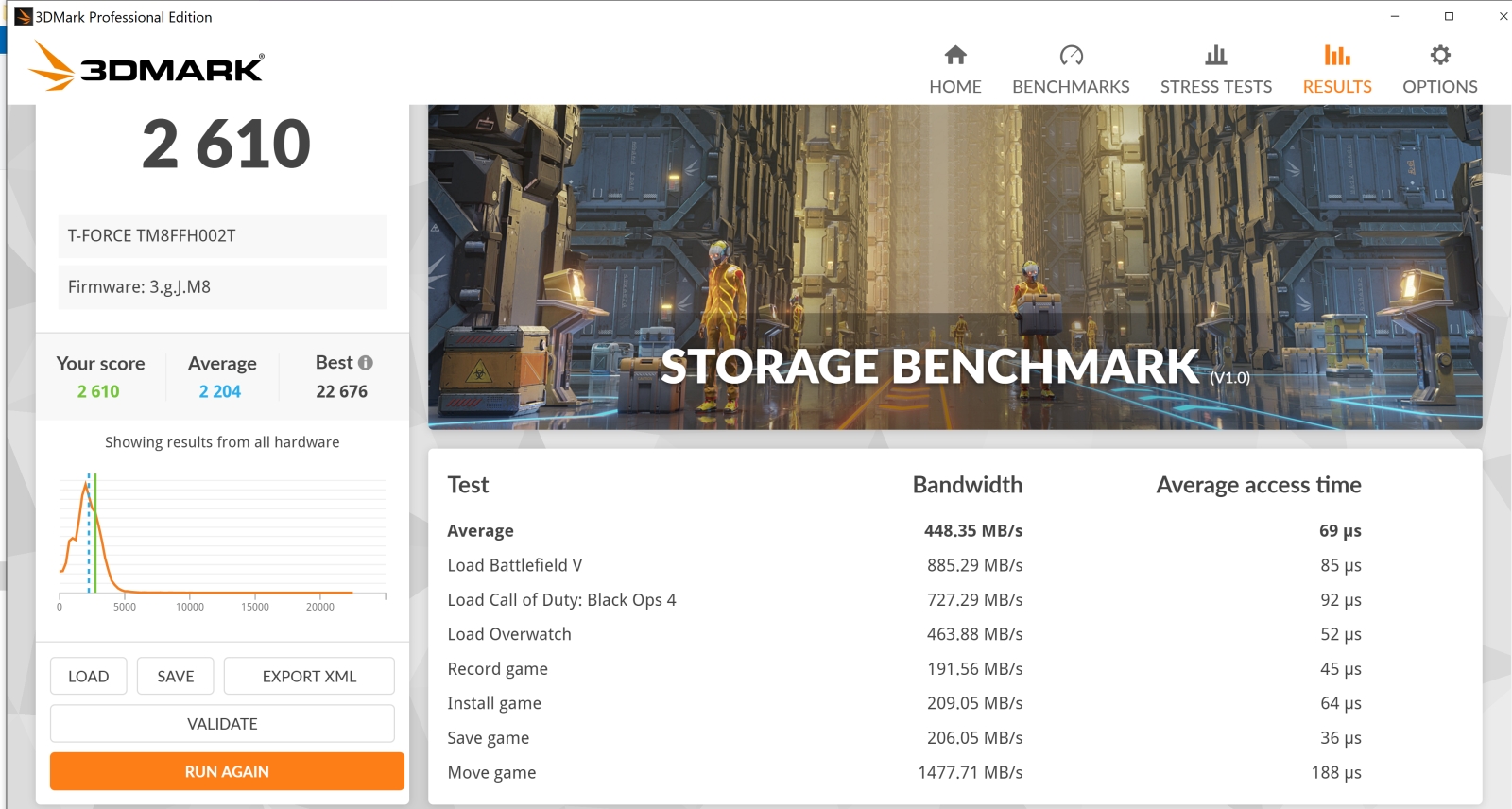
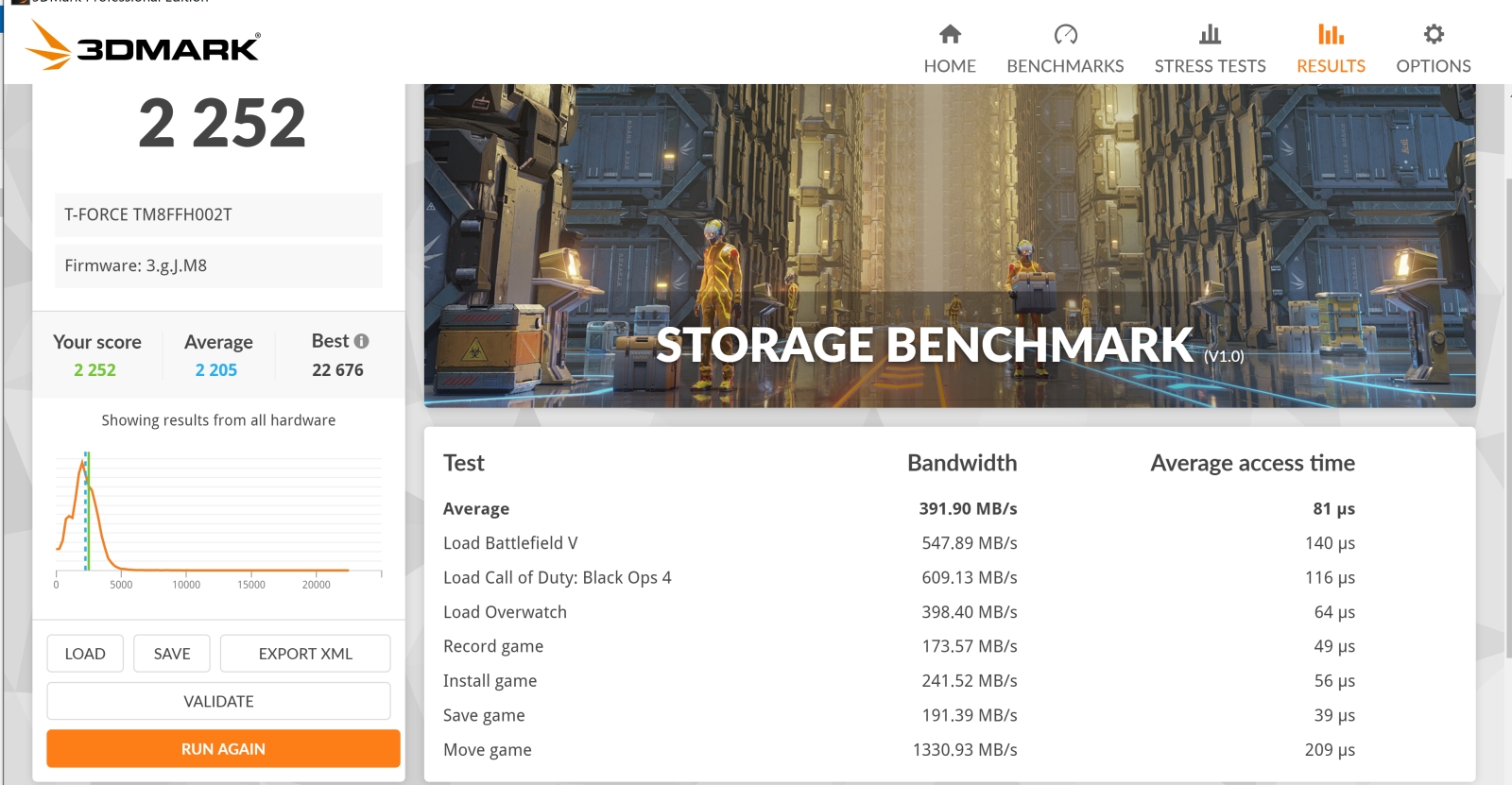
Before we look under the hood of the G70, let’s quickly differentiate DRAM vs. DRAM-less, and why it’s starting to matter less and less. DRAM cache is memory that the manufacturer adds directly to the drive, providing a fast caching point on the chip itself. This DRAM can be used to hold the metadata that provides a sort of roadmap of where all data on that drive is being stored. This means all accesses after the first (where that map is established) will be faster. DRAM-less SSDs instead store that same map in flash cells which are slower and wear out easier with constant use. More recent advances, however, might also use something called Host Memory Buffer, or HMB. HMB instead uses the high-speed memory of the computer to hold this index, using the high speed PCIe lanes for the same task. In our recent tests, we’ve seen excellent performance in HMB-enabled drives, but DRAM-enabled drives are certainly tried and true.
In the case of the T-Force G70 Pro, it has two 1GB Micron DDR4-2400 chips (MT40A512M16JY-083E:B D9TBK). It also has a new Innogrit “IG5236CAA” controller that doubles the number of channels over its predecessor, which has a knock-on effect of doubling IOPS and overall speed. The flash is a YMTC 128-layer 3D TLC NAND (YMN09TC1B1JC6C) loaded on a 2280 length and utilizing PCIe Gen 4×4, NVMe 1.4. In this case, we’re looking at the 2TB Graphene version, which includes a simple adhesive strip that works remarkably well in our previous testing, though there is also one with an aluminum block heatsink version for just a few dollars extra. We’ll touch on pricing when we talk about warranty.
We are big fans of using a variety of testing tools to determine overall performance for drives. As such, we lean on CrystalDiskMark, ATTO, PassMark, and 3DMark. We also run all of these utilities multiple times, and empty, half full, and nearly full to ensure we are getting consistent behavior. There are a lot of theories that NVMe drives benchmark differently based on the amount of data stored, with the empty and full states being the most divergent. Well, I’m happy to report that NVMe drives have improved dramatically over the past few years. The slowdown was a consequence of overprovisioning – a practice that reputable manufacturers have either stopped or drastically reduced at this point. To test this out I checked empty, at 25%, 50%, and nearly full. Rather than essentially pasting the same thing four times, suffice it to say that they are all within a 1% margin of error. As usual, I ran each test three times – it’s a non-issue here.
One of the first tests I like to run is CrystalDIskMark as it gives me a look at seeing if the drive can hit the theoretical maximums. In this case, the G70 advertises 7400 MB/s read and 6800 MB/s Write. Let’s take a look at some synthetic tests to kick things off.
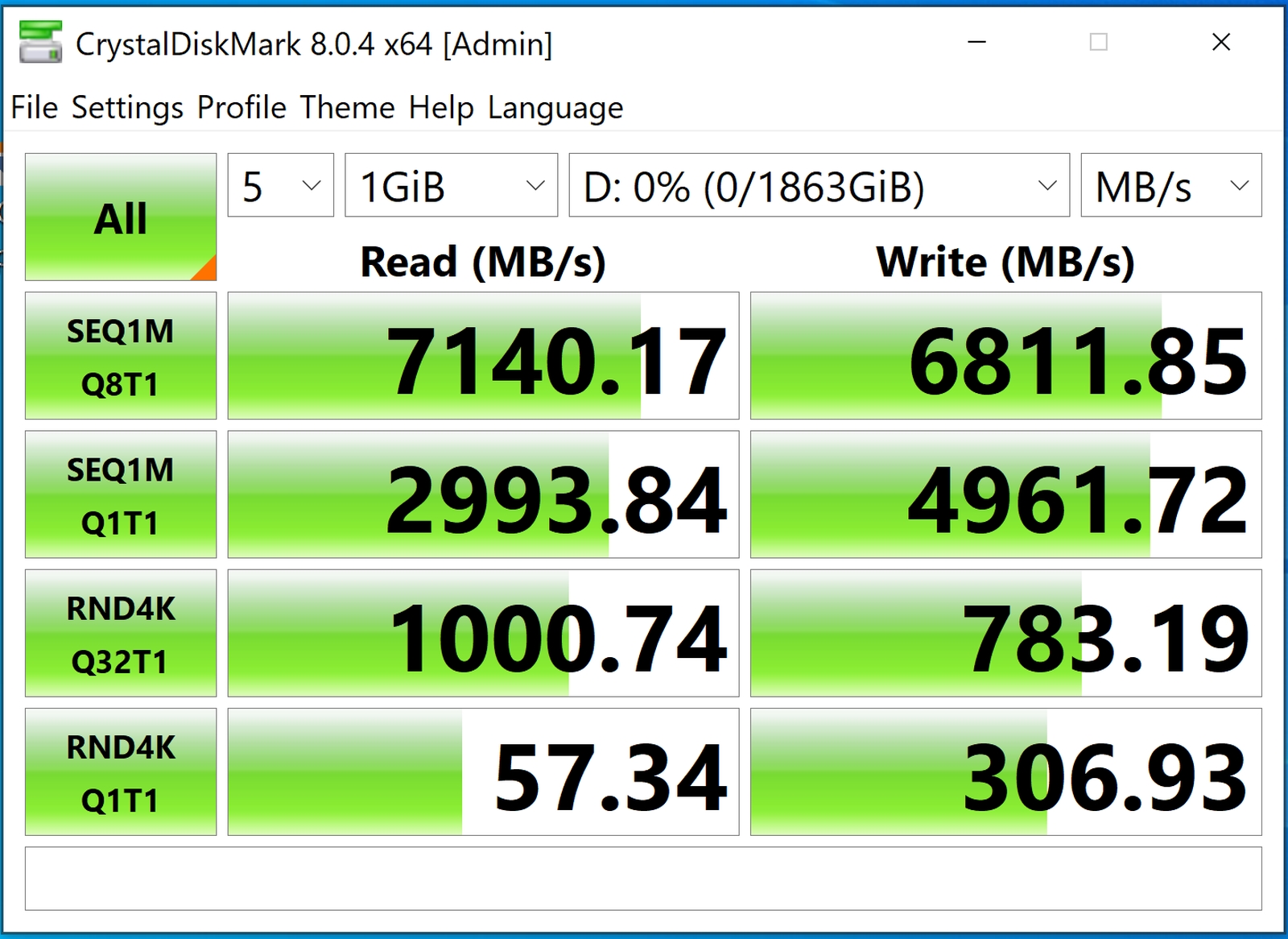
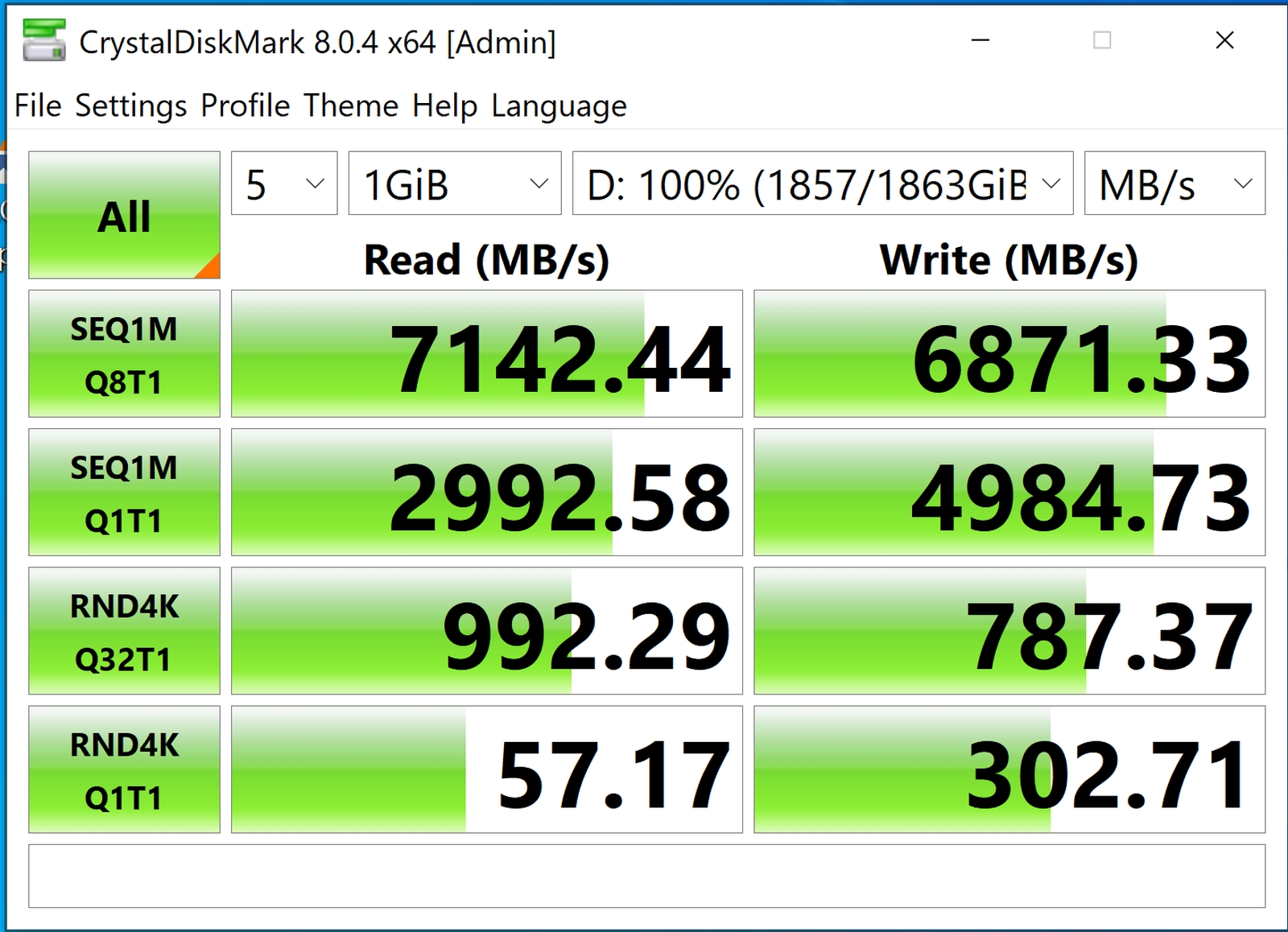
As you can see, both empty and full, the drive consistently hits the advertised numbers and then some, confirming that it’s not over provisioned, and that the new controller chip is doing its job nicely. My next test is always ATTO as it gives a longitudinal look at the drive’s performance over a wide variety of block sizes.

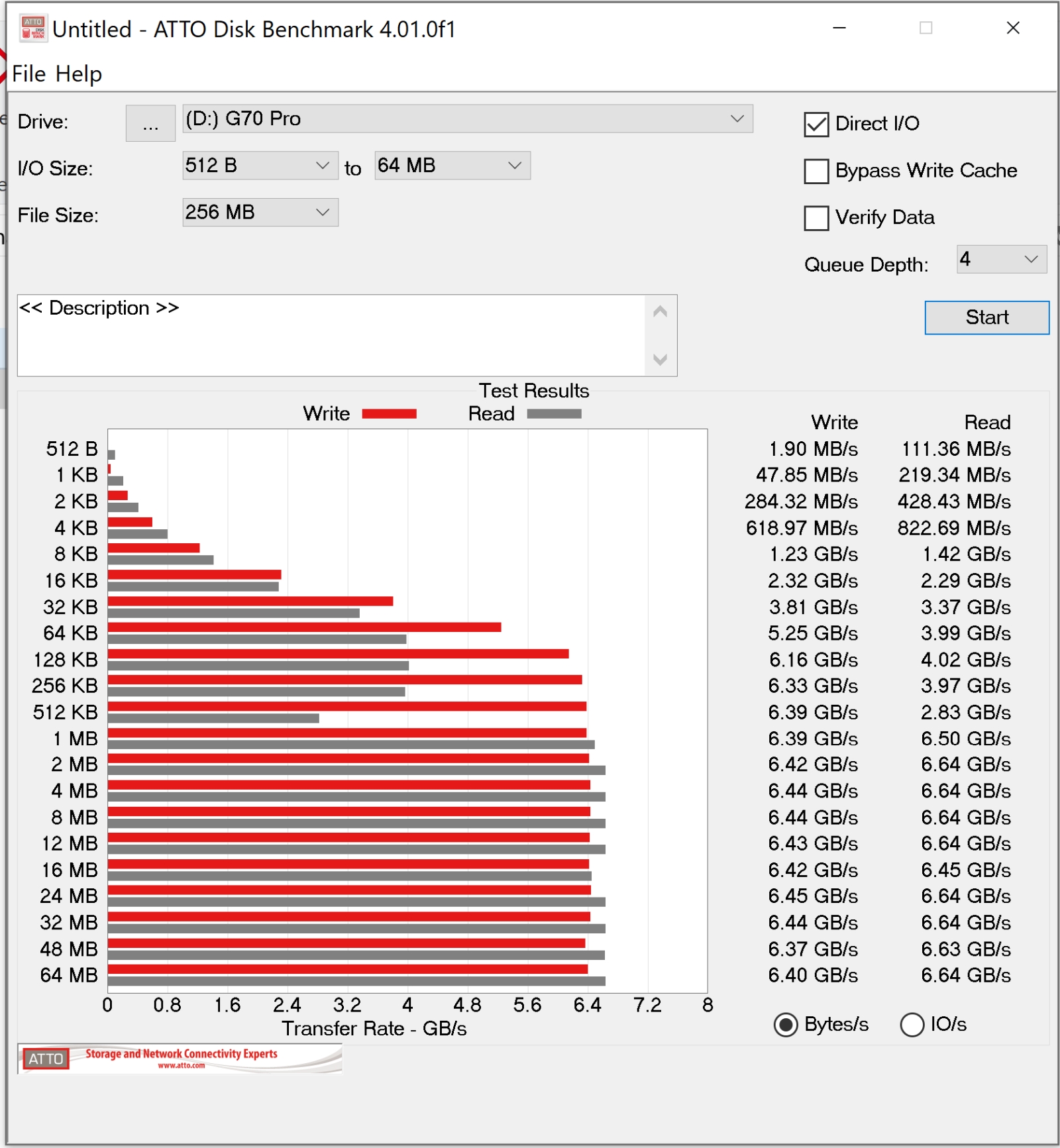
Again we see remarkably consistent transfer speeds, both read and write, once the block size hit 1 MB. This is important as it’s an indicator of how the drive will perform when copying a number of smaller files instead of one large one.
Switching to real-world copies, I started shuffling Steam games around. This is a huge array of files, both small and large, indicating the ups and downs you’d face when moving files. As you can see, we test at several points during a nearly 1.5 TB copy.
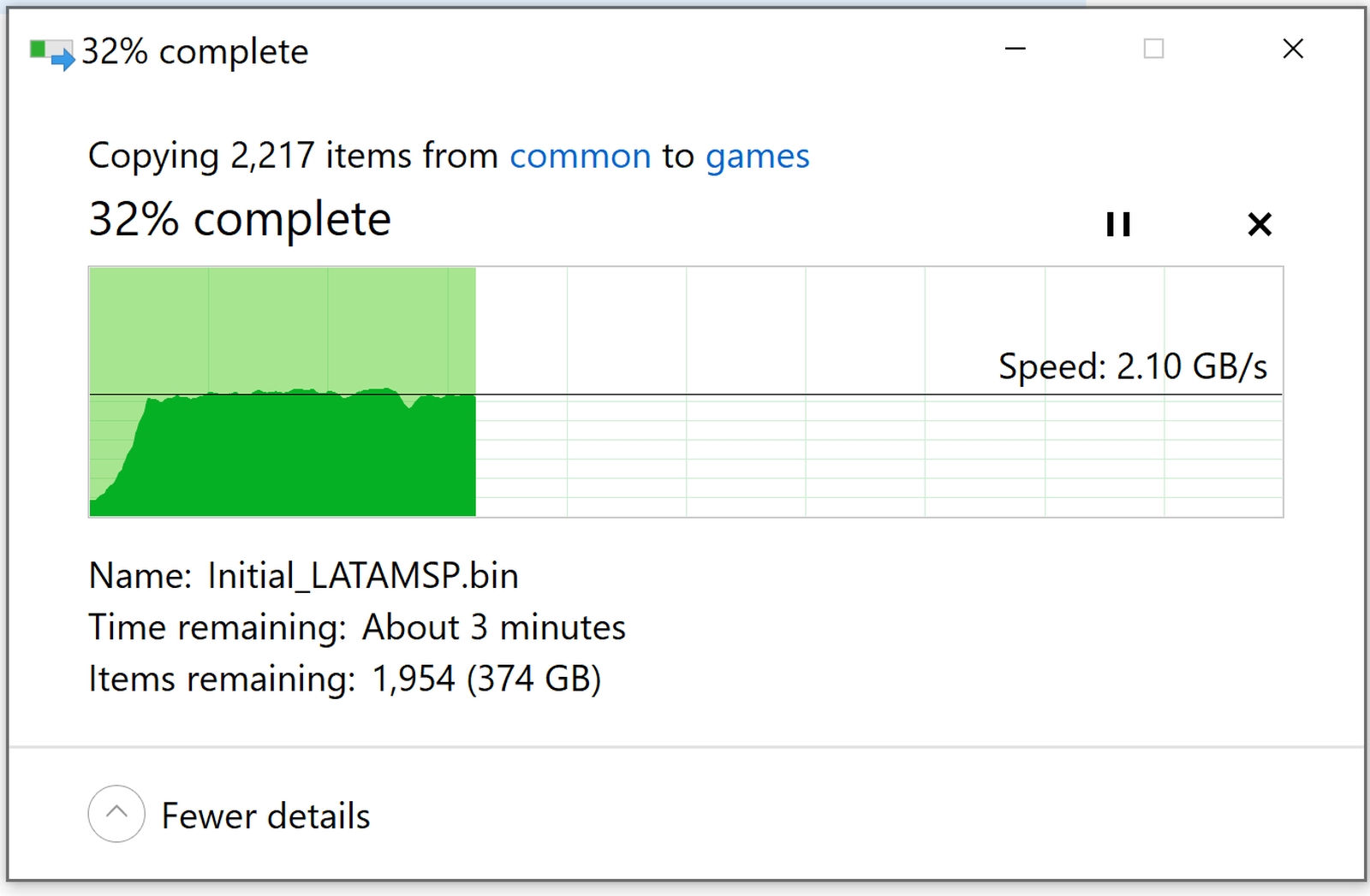
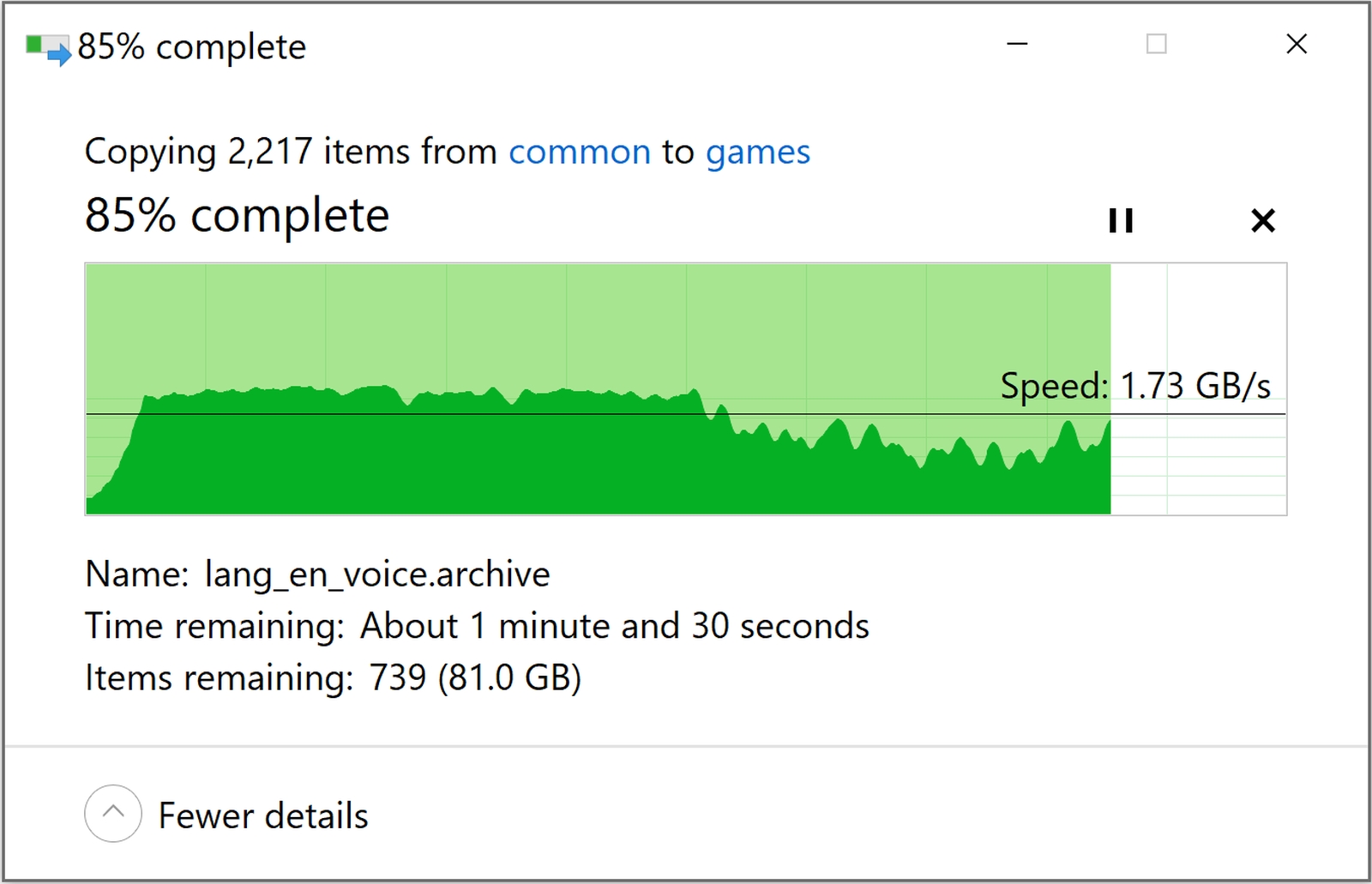
It wasn’t until the copy went over 1.2 TB of sustained write that we saw a few wobbles in a very consistent copy, and even then they remained very speedy to finish the copy.
The last few TeamGroup drives I’ve looked at have been fast enough to function in a PlayStation 5, and the G70 Pro is no exception. It has more than enough read and write speeds for the PS5 to immediately recognize it, format it, and prepare it for secondary storage to add to the pool. The PS5’s interface maxes out somewhere between 5,500 and 6,500 MB/s, which the G70 Pro has no trouble achieving, as we’ve seen. This makes it a great choice for expanding capacity.
Price to performance is king when it comes to storage, and TeamForce has been a serious competitor in this space for a few years now. The performance puts the G70 Pro right in the middle of the biggest names in the industry, as does the price. It’s a tough fight to win the top spot in the PCIe Gen 4.0 SSD market, but the G70 Pro isn’t looking to do that. Instead, it’s offering up an excellent alternative. My own personal experience has shown that they are also remarkably stable and they hold up well beyond the 5 year warranty. The price for a 1TB drive is $89.99, 2TB will run you $136.99, and 4TB is $272. There are sales popping up frequently that have taken $20 to $25 off here and there, so timing your purchase might net you a few extra dollars. One thing’s for certain, these prices position the TeamGroup T-Force G70 PRO SSD as an attractive option within the mainstream PCIe Gen 4.0 SSD market segment. This SSD might not be the fastest kid on the block, but it is offering proper PCIE Gen 4.0 NVMe performance.
G70 Pro T-Force NVMe SSD
Excellent
With excellent price to performance ratio, solid speeds that deliver in both synthetic and real-world tests, and a warranty to match. TeamGroup once again delivers an excellent product that competes with the biggest names out there.
Pros
- Excellent price to performance ratio
- 5 year warranty
- DRAM caching included
- Excellent new controller performance
- Works perfectly on PlayStation 5
Cons
- Read speeds just shy of advertised
